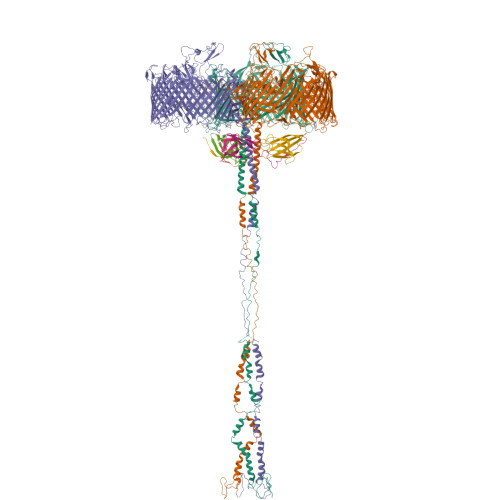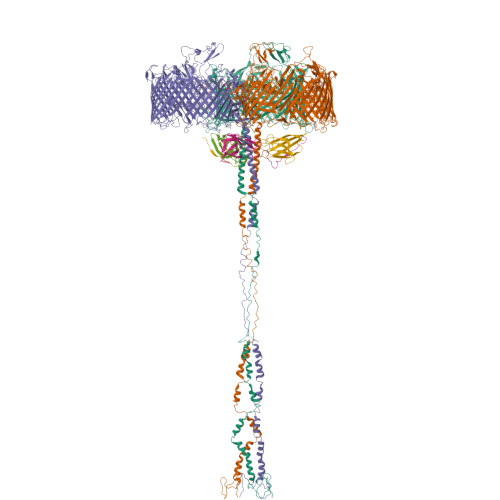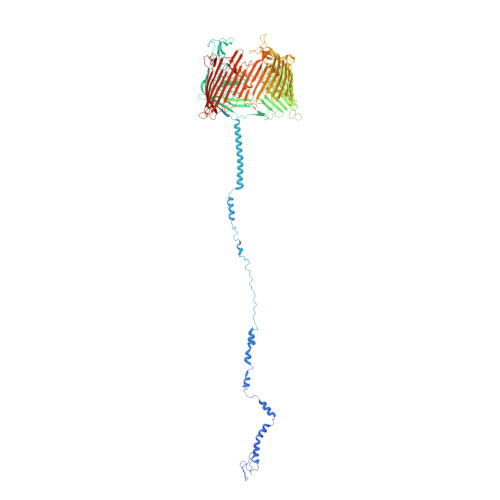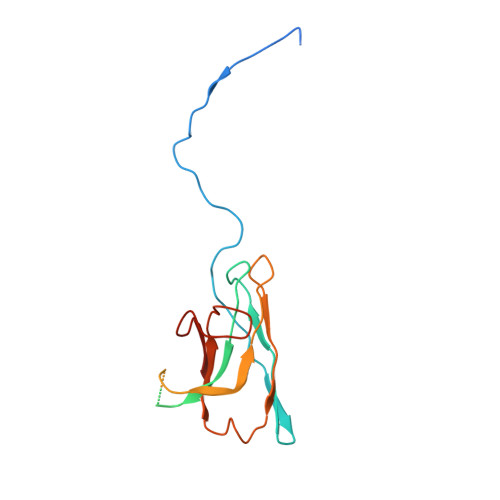The SDBC is active in quenching oxidative conditions and bridges the cell envelope layers in Deinococcus radiodurans.
Farci, D., Graca, A.T., Iesu, L., de Sanctis, D., Piano, D.(2023) J Biological Chem 299: 102784-102784
- PubMed: 36502921
- DOI: https://doi.org/10.1016/j.jbc.2022.102784
- Primary Citation of Related Structures:
8ACA, 8ACQ, 8AGD - PubMed Abstract:
Deinococcus radiodurans is known for its remarkable ability to withstand harsh stressful conditions. The outermost layer of its cell envelope is a proteinaceous coat, the S-layer, essential for resistance to and interactions with the environment. The S-layer Deinoxanthin-binding complex (SDBC), one of the main units of the characteristic multilayered cell envelope of this bacterium, protects against environmental stressors and allows exchanges with the environment. So far, specific regions of this complex, the collar and the stalk, remained unassigned. Here, these regions are resolved by cryo-EM and locally refined. The resulting 3D map shows that the collar region of this multiprotein complex is a trimer of the protein DR_0644, a Cu-only superoxide dismutase (SOD) identified here to be efficient in quenching reactive oxygen species. The same data also showed that the stalk region consists of a coiled coil that extends into the cell envelope for ∼280 Å, reaching the inner membrane. Finally, the orientation and localization of the complex are defined by in situ cryo-electron crystallography. The structural organization of the SDBC couples fundamental UV antenna properties with the presence of a Cu-only SOD, showing here coexisting photoprotective and chemoprotective functions. These features suggests how the SDBC and similar protein complexes, might have played a primary role as evolutive templates for the origin of photoautotrophic processes by combining primary protective needs with more independent energetic strategies.
Organizational Affiliation:
Department of Plant Physiology, Warsaw University of Life Sciences - SGGW, Warsaw, Poland; Department of Chemistry, Umeå University, Umeå, Sweden; Department of Life and Environmental Sciences, Laboratory of Plant Physiology and Photobiology, University of Cagliari, Cagliari, Italy. Electronic address: domenica.farci@unica.it.
























